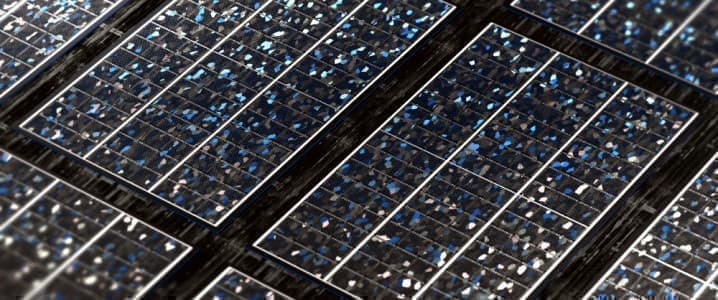
Photovoltaic cells which convert sunlight directly into energy have made much progress. Yet with all the research, history and science behind it, there are limits to how much solar power can be harvested and used – as its generation is restricted only to the daylight.
University of Houston professor Bo Zhao is continuing the historic quest, reporting on a new type of solar energy harvesting system that breaks the efficiency record of all existing technologies. And no less important, it clears the way to use solar power 24/7.
Zhao said, “With our architecture, the solar energy harvesting efficiency can be improved to the thermodynamic limit.” Zhao, Kalsi Assistant Professor of mechanical engineering and his doctoral student Sina Jafari Ghalekohneh reported there results in the journal Physical Review Applied. The thermodynamic limit is the absolute maximum theoretically possible conversion efficiency of sunlight into electricity.
How Does it Work?
Traditional solar thermophotovoltaics rely on an intermediate layer to tailor sunlight for better efficiency. The front side of the intermediate layer (the side facing the sun) is designed to absorb all photons coming from the sun. In this way, solar energy is converted to thermal energy of the intermediate layer and elevates the temperature of the intermediate layer.
But the thermodynamic efficiency limit of STPVs, which has long been understood to be the blackbody limit (85.4%), is still far lower than the Landsberg limit (93.3%), the ultimate efficiency limit for solar energy harvesting.
Zhao explained, “In this work, we show that the efficiency deficit is caused by the inevitable back emission of the intermediate layer towards the sun resulting from the reciprocity of the system. We propose nonreciprocal STPV systems that utilize an intermediate layer with nonreciprocal radiative properties. Such a nonreciprocal intermediate layer can substantially suppress its back emission to the sun and funnel more photon flux towards the cell.”
“We show that, with such improvement, the nonreciprocal STPV system can reach the Landsberg limit, and practical STPV systems with single-junction photovoltaic cells can also experience a significant efficiency boost,” he added.
Besides improved efficiency, STPVs promise compactness and dispatchability (electricity that can be programmed on demand based on market needs).
In one important application scenario, STPVs can be coupled with an economical thermal energy storage unit to generate electricity 24/7.
“Our work highlights the great potential of nonreciprocal thermal photonic components in energy applications. The proposed system offers a new pathway to improve the performance of STPV systems significantly. It may pave the way for nonreciprocal systems to be implemented in practical STPV systems currently used in power plants,” said Zhao.